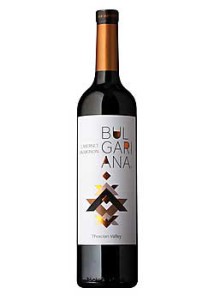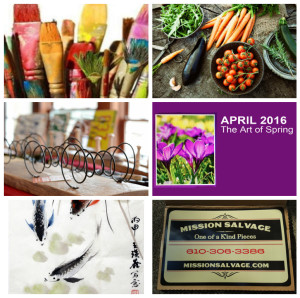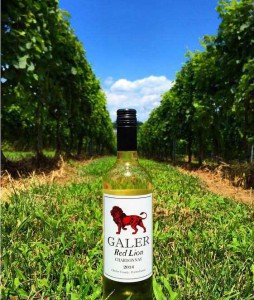Emerging regions offer value, new tastes to broaden your horizons
By Brian Gurnham, Columnist, The Times
 Sweating away at the local YMCA, and trying not to be annoyed by the massive influx of post New Year’s exercise wanabees, I couldn’t help but wonder what would happen to the wine industry if people put as much emphasis on trying a new or different wine in the new year as they do on getting healthy. Most likely the outcome would be the same. As the attendant scanning membership cards summed it up, “just wait four or five weeks, they’ll all be gone”. But I want to believe that at least of few of the well intentioned survive the initial infatuation, and continue their exercise regimens throughout the year.
Sweating away at the local YMCA, and trying not to be annoyed by the massive influx of post New Year’s exercise wanabees, I couldn’t help but wonder what would happen to the wine industry if people put as much emphasis on trying a new or different wine in the new year as they do on getting healthy. Most likely the outcome would be the same. As the attendant scanning membership cards summed it up, “just wait four or five weeks, they’ll all be gone”. But I want to believe that at least of few of the well intentioned survive the initial infatuation, and continue their exercise regimens throughout the year.
With that hope well in hand, here are some suggestions for you to exercise your wine horizons in 2015.
Think undiscovered regions
 Everyone knows the Bordeaux, Burgundy, Loire, Rhone and Provence regions of France, but who has ever heard of the Thracian Valley in Bulgaria, or the Dalmatian Coast in Croatia, or even the Okanagan Valley in British Columbia, Canada? With the demand for wine increasing, and issues such as water scarcity in California, limited land in Bordeaux, and the effects of global warming in Australia, limiting supply, prices will only increase, and you will have to look past the traditional wine regions to find value. Many of the up and coming regions are, ironically, some of the oldest wine growing regions in the world – Greece, Croatia, Romania, Slovenia, Bulgaria and Lebanon. A little digging may be required to find wines from these regions, but your hunt will be rewarded with quality wines at affordable prices. You can also try going north to Canada, where both the Okanagan Valley and the Niagara Peninsula in Southern Ontario are producing delightful cool grape variety wines. Coyote’s Run Estate Winery, only minutes from Niagara Falls, produces crisp aromatic white varietals such as Chardonnay, Riesling, Pinot Blanc and Gewürztraminer.
Everyone knows the Bordeaux, Burgundy, Loire, Rhone and Provence regions of France, but who has ever heard of the Thracian Valley in Bulgaria, or the Dalmatian Coast in Croatia, or even the Okanagan Valley in British Columbia, Canada? With the demand for wine increasing, and issues such as water scarcity in California, limited land in Bordeaux, and the effects of global warming in Australia, limiting supply, prices will only increase, and you will have to look past the traditional wine regions to find value. Many of the up and coming regions are, ironically, some of the oldest wine growing regions in the world – Greece, Croatia, Romania, Slovenia, Bulgaria and Lebanon. A little digging may be required to find wines from these regions, but your hunt will be rewarded with quality wines at affordable prices. You can also try going north to Canada, where both the Okanagan Valley and the Niagara Peninsula in Southern Ontario are producing delightful cool grape variety wines. Coyote’s Run Estate Winery, only minutes from Niagara Falls, produces crisp aromatic white varietals such as Chardonnay, Riesling, Pinot Blanc and Gewürztraminer.
In addition to new countries, take a fresh look at some local areas – New York’s Finger Lakes region, Virginia, and lesser known American Viticultural Areas (AVAs) in California and Washington. The quality of Virginia wines has been steadily improving over the last few years with producers such as Barboursville Vineyard, Tarara Winery, and Linden Vineyards gaining national recognition. Similar quality improvements can be found in wines from the north Fork of Long Island.
Think undiscovered grapes
Cabernet Sauvignon, Chardonnay, Merlot, Pinot Noir and Pinot Grigio sure, but what about Dornfelder, Assyrtiko, Plavac Mali, or Lagrein. Stretching your senses to include lesser known grape varieties can often lead to pure palate pleasure. The change might not be dramatic, but different enough to provide a pleasant change from the predictable profile of better known varietals. Not to diss mainstream noble wines, but I find that increasing the spectrum of aromas, acidity levels, and terroir influences helps one to isolate the most enjoyable elements of a wine. Sticking with the gym analogy, the more different exercises you do, the better the workout!
Many of these lesser known varietals can have tongue twisting names, but think of learning the pronunciation as a part of your new exercise regimen. Friulano, Moscofilero, Assyrtiko, Xinomavro, or Carignano might be difficult to pronounce, but each offers a unique element of palate diversification. Whether it is the lemon, lime and steely acidity of Assyrtiko, the earthy mushroom, sun dried tomato and olive of Xinomavro or the plummy earthly chewiness of the red wine Lagrein from the Trentino Alto Adige region of northern Italy; these undiscovered grape varieties all represent new items on the menu. I know, and am certainly guilty of, having the same entrée every time I visit my favorite restaurant. Why, after all, go off script, when the Kung pao chicken is a safe bet. But let’s face it, trying something new is a risk that is often worth taking – even the Kung pao chicken was new once.
Get Started!
Much like that first trek to the gym, sometimes getting started is the most difficult part. The best way to find new wines is to ask your local wine shop owner, friends, or read trade magazines who constantly scour the globe for new and exotic wines. To get you started here are a couple of my suggestions – wines I’ve enjoyed in the last couple of months, and all available in the tri state area.
Bulgariana Cabernet Sauvignon, 2011 – Listed as one of the Wine Enthusiast best 100 values of 2014, this unassuming cabernet focusses on dried black fruit, is not overly oaked, and has a touch of spiciness on the finish. This easy drinking cab will not compete with a rich complex Napa offering, but at $11 a bottle, well worth a try. Thracian Valley, Bulgaria
Chateau Ksara Chardonnay – I was first exposed to this rich full bodied chardonnay as a gift from my wife’s daughter as she returned from a three month work assignment in Beirut. Not expecting much, I was more than a bit surprised to find such a well-crafted wine. Balanced fruit, oak, and acidity, all come together in a wine with over 14% alcohol. This chardonnay uses grapes from Ksara’s highest vineyard and ages the wine in new oak – imparting a toasty buttery flavor. Not a steal at $17, but better than many of Sonoma’s higher end offerings. Zahle, Lebanon
Zenato Lugana – OK, Veneto is not exactly a new wine region, but Zenato’s Lugana is a very unique wine crafted from a clone of the Trebbiano grape – best known as the grape in Orvieto. But unlike the light, crisp and fruity Orvietos, Lugana, although aged in stainless steel, offers complex aromas of peach, banana, and citrus without any bracing acidity. The wine has a full bodied mouth feel, 13% alcohol, and just enough acidity to offset the residual sugar. Lake Garda, Veneto, Italy
Cheers to your new found discoveries and let us know your favorites. Experimenting is half the fun, and you have to admit, trying a new wine is a lot easier than that Stairmaster!






